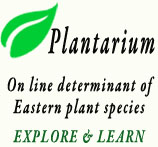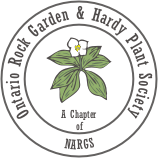Call them as you wish
Initially I wrote a short post for Growing Syneilesis from seeds for the germination page, and then I thought, wait a minute, it is not the only Compositae with fruits/seeds related problems.
So, I wrote a longer post on the subject and then thought, who’s going to read all this? Finally, I wrote another shorter post, and there will be more flower pictures later.
I think everyone knows that in Compositae (Asteraceae) what seems to be a single flower is actually a cluster – a composite of smaller flowers (florets), usually called a head which contains disk and/or ray flowers; both types can be bisexual or unisexual.
And, many species require cross-pollination in order to set seeds; the pollen has a special presentation mechanism which prevents self-pollination (I will talk more about this for Syneilesis).
Probably many are also aware that what we call ‘seeds’ in Asteraceae are actually fruits. In simple botanical terms they are single-seeded nuts. Scientifically, they have been called achenes by some and cypselae by others (see note).
So, we don’t see, collect and sow the actual seeds, but the whole fruits.
It is often a deceptive situation because copious amount of fruits are formed but most of them are seedless (cypsela is a very good name to illustrate that) – like it often happens in the case of Syneilesis aconitifolia. Another example, from my garden this time, is Achillea ageratifolia ssp. serbica.

Syneilesis aconitifolia – lots of empty fruits

Achillea ageratifolia ssp. serbica, flowering very well last summer, alas just lots of empty cypsalae were formed
Conclusion:
If we call them fruits or seeds is not that important; I myself call them ‘seeds’. The important thing is to understand the distinction and be able to assess the situation when it comes to sowing, namely if you are really sowing ‘seeds’ or just ‘fluff’ (e.g., empty fruits).
This is why it is always a good idea to carefully check the fruits for many species of this family; take a note on Aster spp. and Solidago, Anaphalis, but not only.
Often is easy to select the good ones (which are plump) when observed with the naked eye; sometimes with the use of a magnifier – and a lot of time…The smaller they are, the harder is to distinguish the good ones.
For large quantities of fruits the cut method can be used by selecting samples.
Anthemis carpatica ssp. pyrethriformis – selected good and empty cypselae using a magnifiyng glass
Sowing seedless fruits, no matter what we call them, and no matter the plant family, will never result in germination.
Read about Linnaea borealis and Acer triflorum.
Note: “Fruits of composites have been called “achenes” because they resemble true achenes. Achenes are dry, hard, single-seeded fruits derived from unicarpellate, superior ovaries. Ovaries of composites are bicarpellate and inferior. Fruits derived from ovaries of composites are called cypselae “ – Flora of North America
cypsela – from the Greek kypselé, a box, hollow vessel
















































